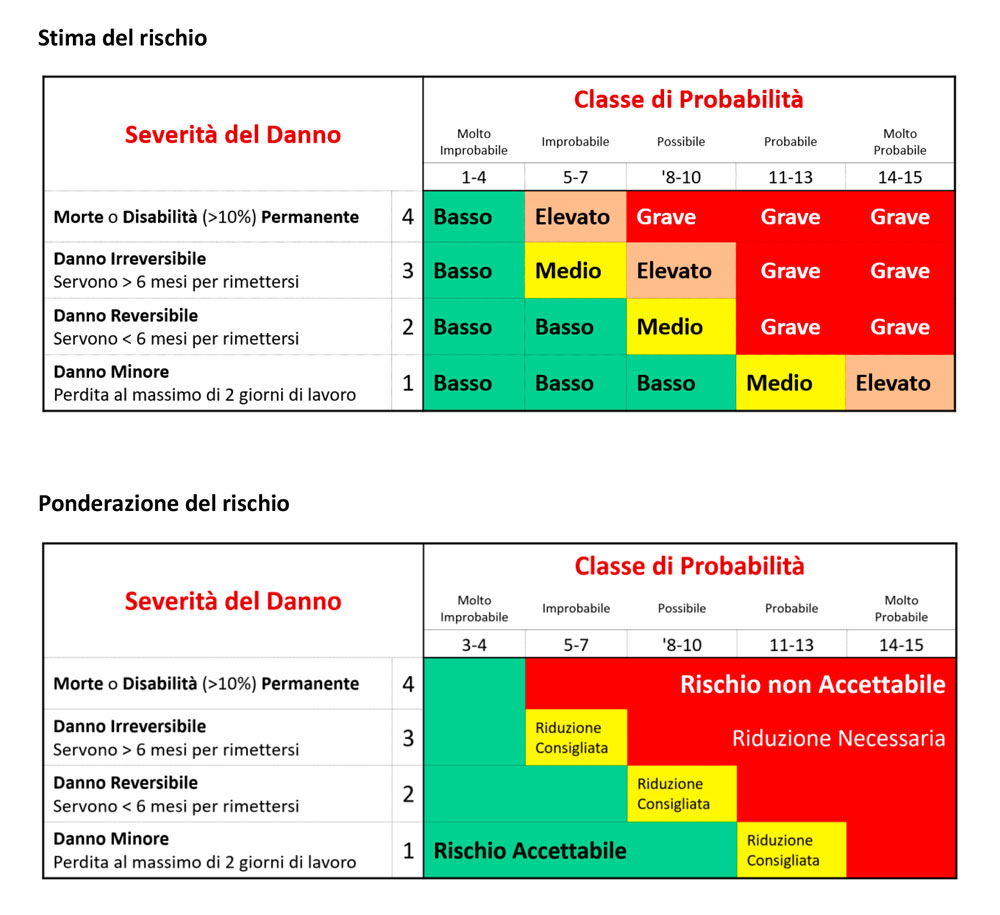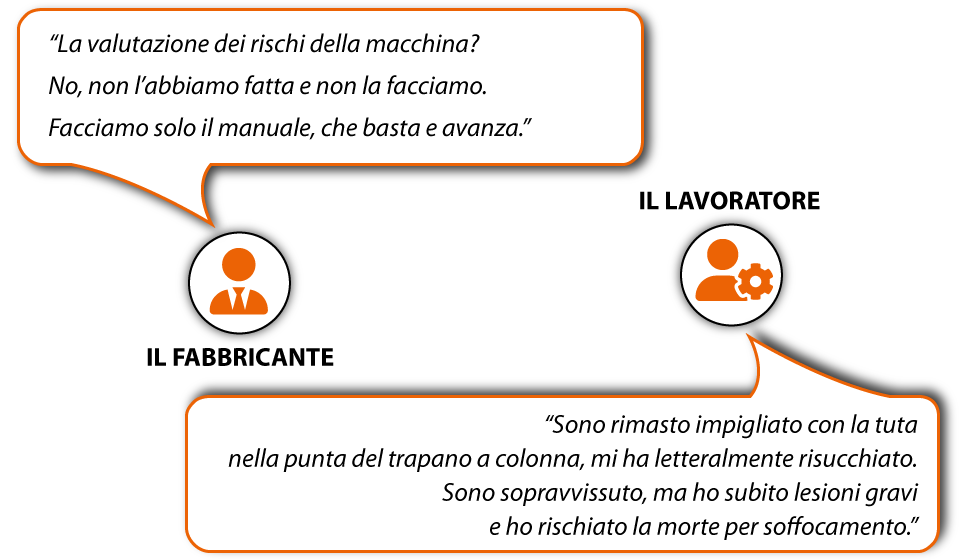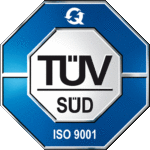Risk Assessment is one of the fundamental activities that a manufacturer (but not only) is required to conduct in order to comply with its legal obligations to ensure the safety and health of people when using products.
An objective of the risk assessment is to eliminate the risks to the greatest extent possible and, if this is not possible, to reduce them to the minimum extent possible based on the knowledge gained through technological advancement. In particular, it entails all prevention and protection measures for the elimination or reduction of risks.
IMPORTANT
The Risk Assessment that we draw up for you includes all the operations and assessments that you must conduct, as the manufacturer, in order to determine the potential hazards for the safety and health of your personnel and the risk of exposure.
There are several product directives that require a thorough Risk Assessment to be carried out, and these include:
- directive 94/9/EC ATEX – Potentially Explosive Atmosphere
- directive 2014/68/EU PED – Pressure Equipment
- directive 2014/30/EC – Electromagnetic Compatibility
- directive 2014/35/EU – Low Voltage
- directive 2006/42/EC – Machinery
Each directive identifies specific EHSRs (Essential Health and Safety Requirements) in accordance with its objectives. Below we take as an example the Machinery Directive 2006/42/EC and its indications for products such as machines, partly completed machinery, installations and devices.

MACHINERY DIRECTIVE AND RISK ASSESSMENT
Even within the machinery sector, safety primarily stems from the comprehension and awareness of the implications of risk, hazard, and their consequences, namely, injury.
It is said that “there is no human activity devoid of risk in an absolute sense”, but what exactly is risk? And what distinguishes it from hazard?
Let's start with these concepts to understand what the Machinery Directive 2006/42/EC indicates.
What is hazard
Let's examine the concept of hazard:
It is the inherent property or quality of a certain factor with the potential to cause injuries
(TUS – i.e. Consolidated Law on the protection of health and safety in the workplace)
Thus, hazard is a potential source of injury , meaning a harmful way of being of a substance, machine, work situation, or behaviour that can lead to an adverse event.
Hazard is often qualified by defining its origin (e.g. a hazard of a mechanical or electrical nature, etc.) or the nature of the potential harm (e.g. a danger of cutting, fire, crushing, shearing, etc.).
Hazard implies an objective, de facto condition, a property from which potential injury may result.
What is risk
Let's examine the concept of risk:
it is the probability of reaching the potential level of harm under the conditions of use or exposure to a specific factor or agent, or their combination.
(TUS – i.e. Consolidated Law on the protection of health and safety in the workplace)
So the risk concerns the probability that something adverse will happen when dealing with hazardous situations (or with something dangerous), related to the severity of the event itself. We speak of residual risk when referring to the risk that remains after protective measures have been taken to reduce the risk as much as possible.
If hazard is the source of the possible injury, the risk can be identified through the following formula
R = H x I
where the risk R is the combination of the probability P that a hazard will actually cause injury and the severity I of the Injury is associated with the hazardous event.
The risk value also indicates the urgency of intervention: immediately or through planning, depending on the circumstances.
What is injury
If risk is the probability that a person is exposed to hazard that can cause an injury, injury is the consequence (physical/health injury).
A numerical estimate is also attributed to the injury in descending order from most severe to least severe, allowing for the classification of severity.
What the Machinery Directive says
The Machinery Directive 2006/42/C E explicitly mentions that a risk assessment must be kept in the technical file:
The manufacturer or his/her authorised representative must ensure that a risk assessment is carried out for the machine he/she intends to place on the market.
For this purpose, he/she should determine which are the essential health and safety requirements applicable to his machinery and in respect of which he/she must take measures […]
The manufacturer or his/her authorised representative, before placing on the market and/or putting into service a machine:
1 ensure that it satisfies the relevant essential health and safety requirements set out in Annex I;
2 ensure that the technical file referred to in Annex VII, part A, is available [...]
The technical file must demonstrate the conformity of the machinery with the requirements of this Directive [...]
The technical file shall include the following elements:
1 a construction file consisting of:
[…]
the documentation on risk assessment demonstrating the followed procedure, including:
1 a list of the essential health and safety requirements applicable to the machinery;
2 the protective measures implemented to eliminate identified hazards or to reduce risks and, where appropriate, an indication of the residual risks associated with the machinery [...]
Each instruction manual must contain, where appropriate, at least the following information […]
l) information on residual risks that remain despite integrated protection measures in the design of the machine and despite additional protection measures and safeguards adopted [...].
IMPORTANT
This means that if, as a manufacturer, you decide NOT to carry out the Risk Assessment but only the Instruction Manual, you would be doubly committing an offence because even the Instruction Manual refers to the Risk Analysis, as it must provide information and warnings regarding the residual risks that remain.
To understand it better, the concept of Risk assessment is summarised in this short story:
BEGINNING OF THE STORY

END OF THE STORY
WHAT SHOULD THE MANUFACTURER DO?
The risk communication system is a risk itself, which is why the manufacturer must follow standards to “do things properly”.
In this case the reference standard is UNI EN ISO 12100:2010 – General design principles – Risk assessment and risk reduction or which, through the specification of principles for risk assessment and risk reduction, defines the specifications for achieving safety in machinery design.
According to the standard, you should:
- identify the machine hazards
- estimate and assess the risks during the life cycle phases of the machine
- eliminate hazards or achieve sufficient risk reduction.
The saying “prevention is better than cure” is also favoured by legislation: risk assessment is primarily about prevention, i.e., activities carried out to lower the risk probability, and secondly, about protection, i.e., activities that protect against the resulting injury:
- Prevention is the set of operations carried out to reduce the likelihood of a particular harmful event occurring (the presence of risk is avoided)
- Protection is the set of operations carried out to reduce the severity associated with a particular harmful event (protection against present risk).
When drafting the Risk Assessment document, it is important to evaluate multiple factors , including:
- the likelihood that a injuries may occur
- the actual exposure of the person
- which conditions that raise the risk.
The main risk factors
- noise
- vibrations
- electromagnetic fields
- ionising and non-ionising radiation
- dazzling or deficient lighting
- microclimate
- mechanical risk
- electrical risk
- falls from height etc.
- Risk due to polluting substances that interact with the human body and can cause acute, chronic, and irreversible pathologies (e.g., gases, vapors, dust)
- risk due to exposure to biological agents (e.g. micro-organisms) that could cause infections, allergies or intoxication



